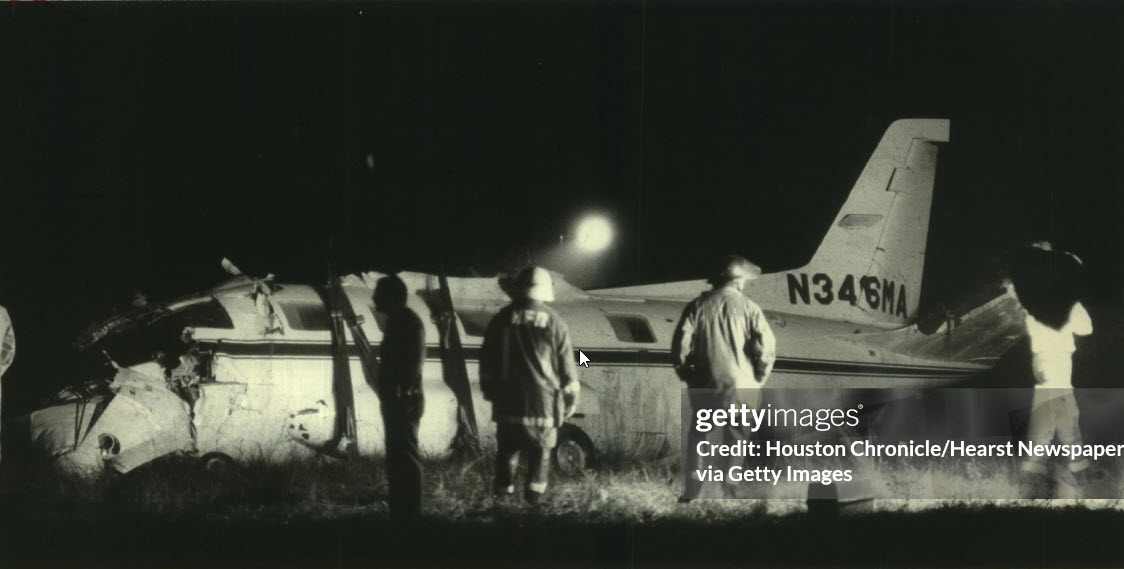Crash of a Piper PA-31-310 Navajo in Huffman: 2 killed
Date & Time:
Jun 13, 1986 at 1303 LT
Registration:
N3539K
Survivors:
No
Schedule:
Lake Charles - Houston
MSN:
31-7912116
YOM:
1979
Crew on board:
1
Crew fatalities:
Pax on board:
1
Pax fatalities:
Other fatalities:
Total fatalities:
2
Circumstances:
The pilot was being vectored around thunderstorms in the area just prior to the accident. During the last radio contact the pilot was issued a vector to the destination airport. During this turn, for unknown reasons, the pilot lost control of the aircraft and descended from the assigned altitude of 6,000 feet msl to the ground in approximately 40 seconds. The aircraft reportedly was in clear weather conditions at this time and had not encountered adverse weather during the entire flight. The pilot did not mention any problems during the radio transmission with ATC. Impact in a shallow lake occurred while in a near vertical nose down attitude at a high rate of speed. The right propeller was found to have been feathered at the time of impact while the left propeller was set in the cruise range. No evidence of any preimpact failure or malfunction of the right engine or propeller was discovered during post accident tests. Path and toxicological exams revealed no physiological factors. Pilots flight time records not available at time of investigation. Both occupants were killed.
Probable cause:
Occurrence #1: undetermined
Phase of operation: cruise - normal
Findings
1. (c) reason for occurrence undetermined
2. Propeller feathering - performed - pilot in command
----------
Occurrence #2: loss of control - in flight
Phase of operation: cruise - normal
Findings
3. (c) airspeed - not maintained - pilot in command
----------
Occurrence #3: in flight collision with terrain/water
Phase of operation: descent - uncontrolled
Phase of operation: cruise - normal
Findings
1. (c) reason for occurrence undetermined
2. Propeller feathering - performed - pilot in command
----------
Occurrence #2: loss of control - in flight
Phase of operation: cruise - normal
Findings
3. (c) airspeed - not maintained - pilot in command
----------
Occurrence #3: in flight collision with terrain/water
Phase of operation: descent - uncontrolled
Final Report:





